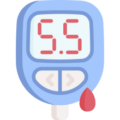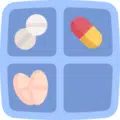Authors:
Ashley H. Meredith, PharmD, MPH, BCACP, BCPS, CDCES
Chandler Howell, PharmD
Reviewers:
Meagan Brown, PharmD, BCACP
Jennifer Pruschowski, PharmD, BCACP, BCGP, CPE
The Problem
There’s no denying that shared decision making (SDM) is an effective communication approach for making patient-centered medical decisions across a variety of health conditions.1 However, while tools for SDM are often useful during patient visits with practitioners,1 studies have yielded mixed results with regard to patient outcomes.2,3 Providers’ perceptions of SDM tools are that they are hard to integrate into their workflow and they worry they will lead to longer patient encounters.4 Despite this, the American Heart Association (AHA), American College of Cardiology (ACC), and Heart Rhythm Society (HRS) all recommend the use of shared-decision making when selecting anticoagulation therapy for people with atrial fibrillation (AF) at risk of stroke.5






 iForumRx.org is a web-based community of practice designed to inform ambulatory care pharmacy specialists, pharmacy residents, and student pharmacists about high-quality, practice-changing evidence.
iForumRx.org is a web-based community of practice designed to inform ambulatory care pharmacy specialists, pharmacy residents, and student pharmacists about high-quality, practice-changing evidence.